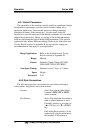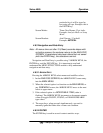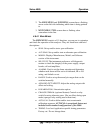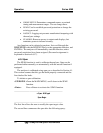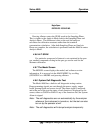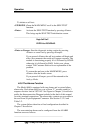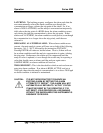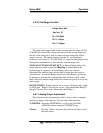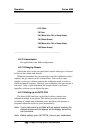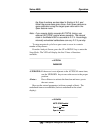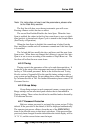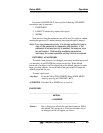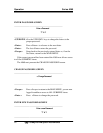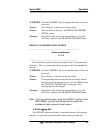
Operation Series 4060
54 Teledyne Analytical Instruments
LATCHING: The latching property configures the alarm such that the
user must manually relieve the alarm condition even though the
concentration no longer violates the trip point of the alarm. So, if an
alarm is NON-LATCHING, and the analysis concentration temporarily
drifts above the trip point of a HIGH alarm, the alarm condition occurs
only during the time the concentration is above the trip point. If that
alarm were LATCHING, the alarm condition would persist (even though
the concentration is no longer above the trip point), until the user
released it.
RELEASING A LATCHED ALARM: When alarm conditions are
present, the main analysis screen will have one or both of the following
messages: 'AL-1', 'AL-2' followed by the instruction 'ENT/ACK' .
Pressing ENTER will release a latched alarm. That is, if there will not
be an alarm condition until the analysis concentration is again violating
the trip point. Furthermore, the alarms will be suppressed until the
analysis value is updated, so even though the screen may be reporting a
value that should cause an alarm, until the analyzer again enters
SAMPLE MODE, no alarm condition will reoccur.
TRIGGER POINT: This is the threshold at which an active alarm can
enter into alarm condition. If an alarm is HIGH, ACTIVE, and set at
20.00 ppb, then when the analysis concentration is at or above 20.00 ppb
an alarm condition is initiated or maintained.
CAUTION: IT IS NOT GOOD PRACTICE TO SILENCE AN
EXISTING ALARM BY SETTING THE ALARM
ATTRIBUTE TO ‘DEFEAT”. THE ALARM WILL NOT
AUTOMATICALLY RETURN TO “ACTIVE” STATUS.
IT MUST BE RESET BY THE OPERATOR. IF IT IS
NOT RESET, YOUR PROCESS WILL BE RUNNING
WITHOUT THE SAFEGUARDS THIS INSTRUMENT IS
DESIGNED TO PROVIDE.



